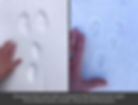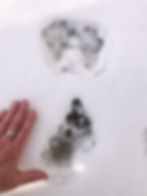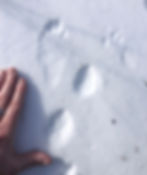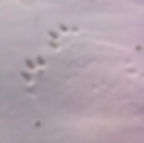Snowshoe Hare Tracks
- katemacquarrie22
- Feb 4, 2024
- 2 min read
The most abundant wildlife tracks I’m seeing these days are from Snowshoe Hare, and I’ve been getting quite a few questions about them. On my own land, there are places where you couldn’t squeeze another track in if you tried, which makes me wonder about the track-to-hare ratio: each animal leaves a lot of tracks!

Hare tracks can look very different depending on the snow conditions, and it’s common for people to misidentify them. Hares have four toes on their hind feet and five on the front, but soft snow and furry feet often make them hard to see. Fortunately, their gait is distinctive. Snowshoe Hares move leapfrog-style, with their large hind feet landing ahead of the staggered front feet (Photo 1, with an animal that was moving toward the top of the photo). Once you remember that, you should have no problem identifying even the strangest Hare tracks, with one possible exception.
I do see people mistaking Red Squirrel tracks for Snowshoe Hare from time to time. While Squirrels do have a similar leapfrog-style gait when bounding, their tracks are much smaller than Hare (Photo 2). That’s one reason why it is always useful to have something in the photo for scale when asking for track identification.

While Photo 1 shows what I think of as the “typical” Snowshoe Hare track, they can look very different in different snow conditions. In wet or very deep snow, Hares will often splay their toes to enhance the ‘snowshoe’ effect, making tracks look huge (Photo 3). I see these tracks sometimes mistaken for Bobcat, but that J-shaped pattern with two large hind feet ahead of two smaller front feet tells the story.

You likely don’t think of Hares as having nails or claws, but they do! In the right snow conditions, they register in the track (Photo 4) and it can be easy to think it was made by some other animal. Once again, that distinctive gait tells the story. On crusty snow, those nails may be the only things that register (Photo 5).

Although we often call our PEI animals Rabbits, they are really Hares. Hares have longer ears and legs than Rabbits, don’t live in large groups like Rabbits do, and have young that are precocious (ready to move around as soon as they’re born) rather than altricial (blind and helpless like kittens).

Our Island Snowshoe Hares are also known as Varying Hares for their change from brown in summer to white in winter. This is triggered by shorter days in fall and helps camouflage the animal in winter. Not all our Hares turn white, though. PEI has a population of melanistic Snowshoe Hares that are nearly black and stay this colour year-round. They are likely more susceptible to predation in winter, as are white Hares in fall before the snow hits.
It seems you can’t go anywhere this year without seeing Snowshoe Hare tracks, so keep an eye out for the distinctive pattern when you’re out enjoying PEI untamed!
